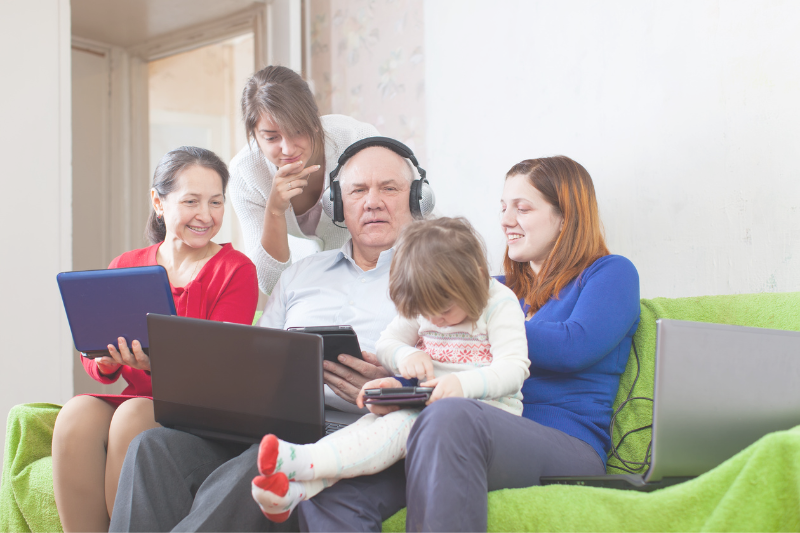As humanity entered the 21st century, the internet radically reshaped lives across continents. It linked previously disparate populations, driving economies to new heights and spreading ideas on an unprecedented scale. However, along with endless benefits, this digital transformation introduced novel issues for mental health and wellness worldwide. In an era where data streams endlessly and boundaries between work, leisure and rest have blurred, psychological welfare is no longer purely personal—it is a global concern demanding coordinated solutions.
This article explores how the internet age cultivates and challenges psychological health, outlining enhancements and pressing problems. It examines strategies to safeguard mental well-being universally as technology further permeates daily existence. While access to knowledge grew and movements found platforms, constant connectivity also bred isolation and distraction.
The digital revolution offers a double-edged sword. Online therapies and self-care apps expanded treatment access exponentially. However, nonstop newsfeeds, virtual harassment and digital dependencies reveal technology’s capacity to strain psyches. The challenge lies in discerning technology’s power to empower from its potential to overwhelm. As lines between online and offline lives dissolve, prioritizing mental health demands global cooperation and careful policy.
Mental Health: A Global Concern
Mental health issues today touch people all over the world, in every country and community. According to the World Health Organization, over 970 million individuals globally struggle with a mental disorder, predominantly anxiety or depression. Mental illness is a top cause of disability planet-wide, yet frequently goes unattended due to stigma, lack of access to care, or insufficient resources.
As our world grows more interconnected, these issues ignore borders. World crises for example the COVID-19 pandemic and climate change have further exacerbated stress, grief, and unease on an international scale. At the same time, digital platforms have become both a place for assistance and a source of collective anguish, highlighting the necessity of comprehending mental health within the broader context of our internet epoch.
The Influence of Social Media on Mental Health
Perhaps the most discussed digital progress influencing mental health is the rise of social media. Platforms like Instagram, TikTok, Facebook, Twitter (now X), and YouTube impact how people see themselves and others. Some post curated highlights of their lives online, leading others to feel inadequate. Research has linked this to increased levels of anxiety, depression, and low self-worth—particularly among teenagers and young adults.
Watching others enjoy activities, accomplishments, or luxuries can create a persistent fear of missing out. FOMO not only causes dissatisfaction with one’s current situation but also fuels compulsive checking habits that interrupt sleep and focus. Digital networks can also serve as arenas for cyberbullying, trolling, and hate speech. Victims of online abuse often experience long-lasting psychological harm, like post-traumatic stress, depression, and suicidal thoughts.
Addiction and Dopamine Feedback Loops
In the digital realm, platforms leverage the mind’s incentive mechanism to shape addictive tendencies. The endless scrolling, likes, and alerts can cultivate dependency, rendering disconnection increasingly difficult and heightening stress in the absence of online life.
The Rise of Progressive Psychological Tools
While the web presents challenges, opportunities also emerge. The evolution of digital mental healthcare stands as one of modern psychology’s most impactful strides.
Teletherapy’s Reach Expands
Remote counseling has improved access especially for isolated or underserved communities. Platforms such as BetterHelp, Talkspace, and government-funded services allow connection to licensed professionals from one’s home.
Mindful Applications
Apps including Calm, Headspace, Moodpath, and Woebot provide guided meditation, journaling prompts, conversational AI, and cognitive strategies. These resources may help users track mood, symptoms, and self-care.
Online Communities and Mutual Aid
Fora like Reddit’s r/mentalhealth or Facebook groups enable individuals to share experiences and find kinship with others navigating similar struggles. For many, such community proves transformative.
AI in Mental Healthcare
Artificial intelligence is being applied to detect early signs of distress through speech, writing, or behavior patterns. In nascent stages, innovations hold potential for preventative intervention and customized care.
The Work-Life-Internet Integration
In the digital era, professional and personal realms often intersect in shared physical and mental spaces—work from anywhere, emails after hours, blurred partitions introducing new pressures.
Always-On Expectations
Numerous workers feel an imperative to be accessible around the clock, risking burnout and fatigue. The demand for “productivity” at all times combined with perpetual digital notifications contributes to mounting anxiety.
Youth in a Digital World
Growing up immersed in technology’s glow, today’s youth know no other reality. While online connections provide access to information and support networks, screens also strain attention and sleep. Constant comparison on social media impacts identity development and wellbeing. Younger users are particularly vulnerable to bullying, addiction, and depression.
However, the digital world likewise enables learning about mental health without stigma. Online tools reduce isolation, as youth express themselves and seek help from anywhere. Still, unrestricted screen time correlates with physical inactivity, poor sleep, and focus issues. Educators, parents and developers must find equilibrium, prioritizing safety within the online social ecosystem.
Mental Healthcare in the Internet Age
As technologies broaden access to care, deep fissures in the system are also exposed. Millions globally lack network infrastructure in underserved areas. Where internet exists, cultural mismatches mean online therapies often do not align with local values and languages. Privacy is another concern, as personal data collection by apps raises ethical queries over protection and profitization of sensitive information.
While a boon for some, the digital divide persists. In rural and low-income communities, telehealth and wellness apps frequently sit just out of reach. Designs emanate primarily from Western mindsets, potential barriers to efficacy in other cultures. Users enter online spaces trusting privacy, but personal details may circulate without consent. Governments, companies and clinicians must work to close gaps and build trust for digital mental healthcare to achieve its promise.
Global mental health is dependent upon equal, reliable and accessible care for all people.
Strategies for Fostering Global Wellness in the Digital Era
As we advance, those concerned with mental health can implement measures to promote well-being online:
Digital Awareness Instruction
Educate individuals, particularly youth, on thoughtfully evaluating information, protecting privacy and identifying unhealthy behaviors online.
Curriculum on Mental Health
Integrating lessons on mental health into standard education helps reduce stigma and teaches coping early.
Ethically-Driven Technology Progress
Companies must prioritize wellness by designing platforms limiting harmful material, reducing addiction-prone aspects and shielding data.
Policy and Funding for Mental Health Services
Governments should invest in services and infrastructure for mental health, including digital options, especially addressing underserved groups.
International Cooperation
Mental health affects the global community. Nations can share resources, studies and best methods to jointly develop effective worldwide approaches.
In Conclusion: Building a Healthier Digital Future Stage
The digital age remarkably reformed humanity. It connected us like never before, yet also mentally strained and emotionally isolated many. Global wellness and mental health now meet – technology may exacerbate issues or serve as a powerful resource for healing support.
Success relies on contribution from individuals, groups, creators and leaders – ensuring technology facilitates rather than undermines mental well-being. By balancing technology use, prioritizing ethics, including all people, and showing compassion, we can create a future where mental health is a global priority and online spaces nourish understanding, recovery and hope.



